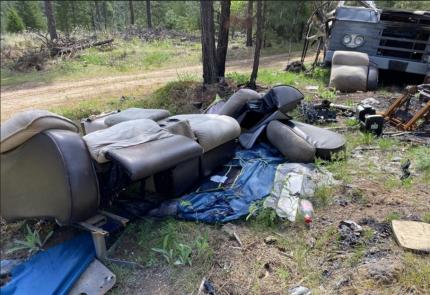Managing Wildlife Populations
Goose Surveys: Biologists Holman, Stephens, and Wickhem continued the twice-monthly goose surveys in Clark, Cowlitz, and Wahkiakum counties. Dusky Canada geese are the focus of this effort, but all species encountered are counted and documented. Dusky geese are a sub-species of Canada goose that spend summers in Alaska and migrate through and overwinter in southwest Washington and northwest Oregon. Duskys are closed to recreational harvest due to low population levels. The purpose of the surveys is to count dusky geese observed and read alphanumeric codes on any red-collared duskys. These data are submitted to U.S. Fish and Wildlife Service and are used to develop an annual survival estimate for the dusky geese. Wickhem recorded 17 duskys within a flock with cackling Canada geese on this survey.
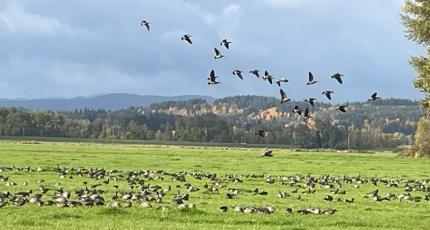
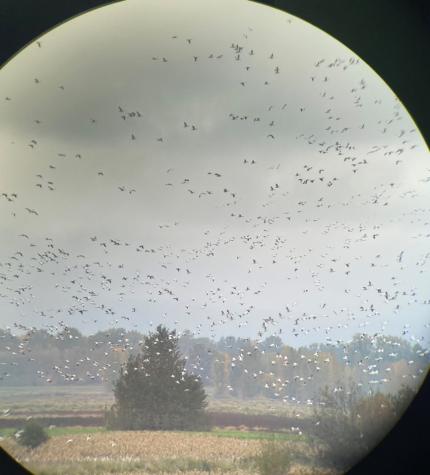
Klickitat Mule Deer Mortality Investigations: Biologist Wickhem investigated three mortality (death) signals from collared female mule deer in the first two weeks of November, two of which were in one day. Wildlife Conflict Specialist Jacobsen assisted in one of the investigations as well, which required a lengthy necropsy (wildlife autopsy). The first deer was likely killed by coyotes but had been aggressively scavenged by the time Wickhem arrived, so it wasn’t possible to tell for sure.
The second deer was completely intact when Wickhem arrived. The carcass was found approximately 250 yards from a highway and after skinning a portion of the carcass, extensive trauma and internal bleeding were observed. Wickhem determined the doe died after getting hit by a vehicle.
The final deer was also intact when Wickhem and Jacobsen arrived but showed signs of bloody diarrhea. During the necropsy the pair found discolored organs and blood in the intestines and body cavity. After consulting with an agency veterinarian, it was determined she likely died from a hemorrhagic disease, but not adenovirus hemorrhagic disease which has been documented in Klickitat County in 2017 and 2022.
These deer are part of a 4-year study being conducted throughout (Game Management Units) GMUs 388 and 382 to track the annual movements of female mule deer and locate important migration corridors. Staff members are also attempting to determine cause of death when an animal dies, which has proven to be difficult. In winter 2021, 81 collars were deployed throughout the GMUs for this effort. Twenty-two collars were deployed in the winter of 2022. Twenty-three collars were deployed in the winter of 2023. Most of the collars deployed in 2023 were redeployments replacing study deer that died over the first two years of the study. We are nearing the end of the study so these collars will not be redeployed for this project.
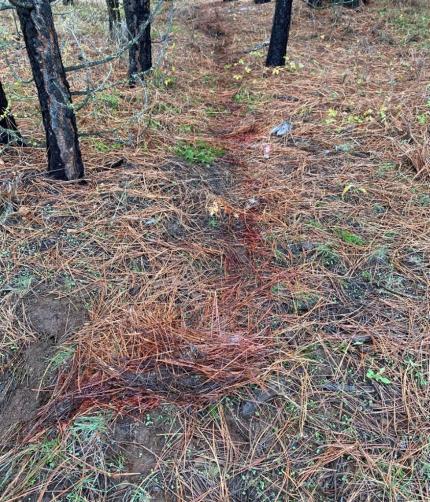
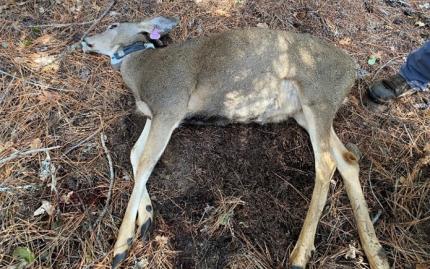

Providing Recreation Opportunities
Hunter Harvest Checks: Regional wildlife biologists, wildlife conflict specialists, and customer service specialists continue to complete checks of hunter harvested wildlife. Many species of wildlife including cougars, bobcats, bears, bighorn sheep, and mountain goats have checking requirements to facilitate biological sample collection and assure the legality of harvests. Hunters are reminded to check the Big Game Seasons Pamphlet in order to be clear on checking requirements for various species. Recent checks have included several sets of elk hooves and a handful of cougars.
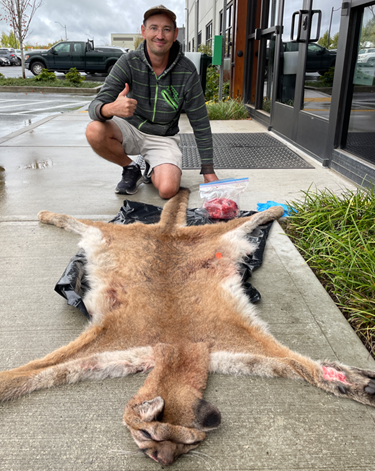
Conserving Natural Landscapes
Switching It Up: When the first hard frost arrives, wildlife area staff members are finally given a reprieve from the intense weed control activities that dominate much of their time during the spring, summer, and fall. On the Mt. St. Helens Wildlife Area, the first frost arrived at the beginning of November. There are still some weed control activities that will happen, but the winter season is a great time for wildlife area staff members to catch up on maintenance activities, survey for migrating waterfowl, document winter movements of elk, replace and update signage, and tackle data reporting. There is nothing that makes a wildlife area manager, or assistant manager miss the weed season like a few hours in front of their computer.
Assistant Manager Risley visited multiple sites around the Mudflow Unit to replace signage. Risley ran into Washington Department of Fish and Wildlife (WDFW) Fish Program staff members releasing 15 adult coho salmon into Bear Creek on the Mudflow Unit. Since migratory fish are unable to access the upper reaches of the North Fork Toutle River and its tributaries, WDFW captures and transports adult coho salmon and steelhead to both Bear Creek and Alder Creek to spawn naturally and perpetuate these native runs.
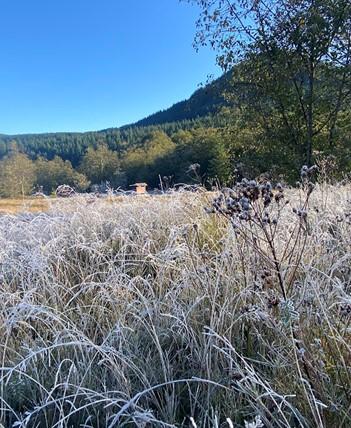
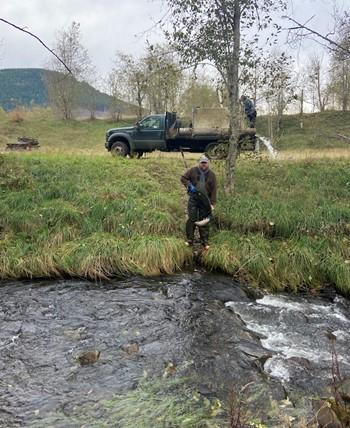
Providing Education and Outreach
Industrial Timberland Access: Private Lands Biologist Gray was interviewed by the Columbia Insight magazine to learn more information about private industrial timberlands in southwest Washington and issues associated with allowing public access. The picture below shows one of the unfortunate realities many timber companies face. One of the benefits of enrollment into the WDFW Private Lands Access Program is financial assistance and coordination to help private timberlands clean up garbage dumping on their lands. WDFW is currently seeking private timberlands and small forest landowners to enroll in the access program to assist these landowners in providing free public access.
